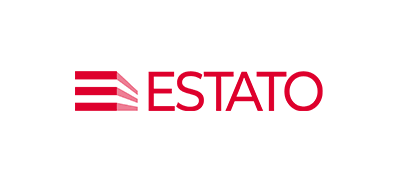FAQ


Roller chain qustionsRoller chain FAQ's
A roller link is the interior assembly of the chain consisting of two bushings press-fit into each of the linkplates, including rollers if applicable, it should be noted that the same roller links are used for both single and multiple strand chains.
Offset links, also known as ½ links or crank links, are used to make a chain an odd number of pitches in length, often used to shorten a chain by one pitch. Offset links are available in two different configurations.
Single-pitch offset links, slip-fit type, are furnished with a slip-fit pin unassembled in the linkplates. A flat is milled on one end of the pin preventing it from turning in the linkplate once installed.
Two-pitch offset links, press-fit type, are an offset link and a roller link assembled together. The press-fit construction of this assembly greatly increases its structural rigidity, reliability, and durability. For these reasons, the two-pitch offset assembly is recommended in preference to the single-pitch offset. However, due to the reduction in the chain’s working capacity, offset links, of either type, are not recommended in performance oriented drives.
Connecting links are used to join the two ends of the chain together and are provided in two different configurations, depending on the application.
Slip-fit links, the most common and most popular, are provided for general chain applications and allow the easy slip fit assembly of the cover plate over the pin ends. This slip-fit construction does not have the same integrity found in the assembled chain and can reduce the chain’s working load capacity by as much as 30%.
Press-fit connecting links are provided when the integrity of the connecting link needs to be equal to that of the base chain. This design uses pitch holes in the cover plate that are smaller than the chain pins, requiring the user to press the cover plate onto the pins before installing the spring clip or cotter. While more difficult to install, this type of connection provides the greatest load carrying capability.
Riveted chain is constructed using pins that extend through the plate on each side and are then riveted, or sidemashed, on their ends to add some additional strength to the hold between the pin and plate. Note: the riveting, or sidemashing, is NOT what holds the pin and plate together. The interference fit between the plate hole size and the pin diameter hold the two together.
Cottered chain is constructed using pins that extended through one plate and are sidemashed and through the second side a further distance than through the first plate, with a cross-drilled hole for inserting a cotter pin. Note: cottered chain is also manufactured using an interference fit between the plate hole size and pin diameter. However, the plate is easier to remove following removal of the cotter, because grinding of the riveted pin end is not necessary.
Yes, we can do custom logos by molding, but we need your authorization letter.
Length shorter than 20 cm is free, express charge collected.
20 days for 250,000 meters, exact time should be according to the QTY, please send email to us and check.
Our products are mainly exported to dozens of countries including the United States, Germany, Brazil, Chile, Australia, Canada etc.
Get in touch todayHuadi teams
Amwerk believes in giving back and investing in the community that we live in. Our culture of service and teamwork is very important to us, and we support a variety of causes that our employees care about. Ultimately, our goal is to make a lasting, positive impact on the people around us including our clients, employees and communities.
We’re proud of our reputation as one of the finest “one-call, one-stop” manufacturers of brand identity and electronic user interface products. We take your trust seriously, employing proven quality management principles to enhance customer satisfaction and continually improve our performance and capabilities. We have decades of experience meeting the stringent regulations and certifications for the automotive, aerospace and medical device industries, which serve as benchmarks for all of the products we manufacture.
All Amwerk facilities are certified to operate under the guidance of various international standards for quality management systems based on their respective customer requirements and products. Conformance to these standards ensures that Amwerk maintains the highest level of product quality and process control in their manufacturing facilities. In addition, many Amwerk label constructions are listed with Underwriters Laboratories as well as tested and approved to the US Standard.
At Amwerk, we value a culture of collaboration and service. We’re passionate about serving our clients to the fullest, while continuously growing, learning, and innovating. With competencies across multiple industries, we offer our customers a more reliable supply chain and confidence in the long life of their program.













